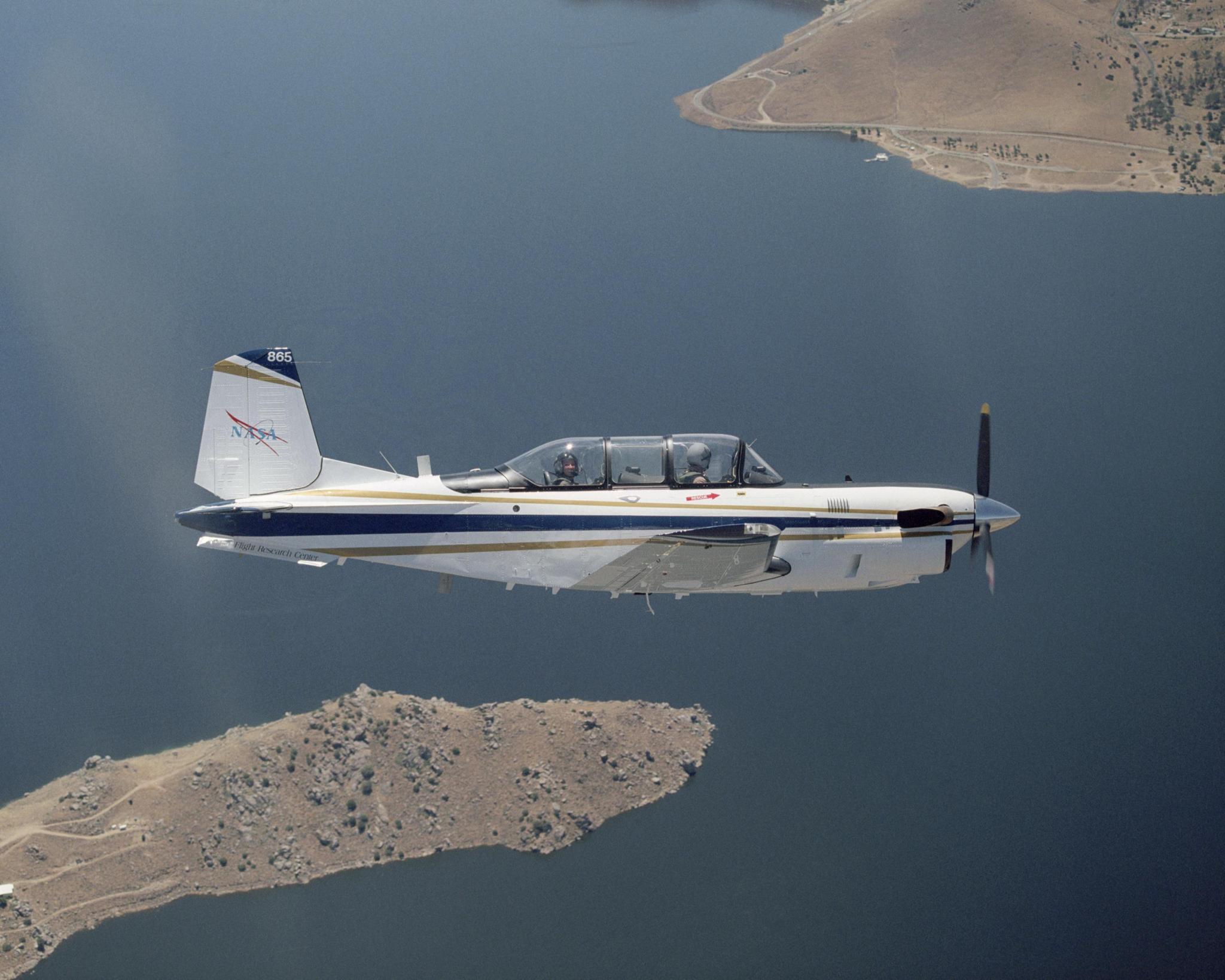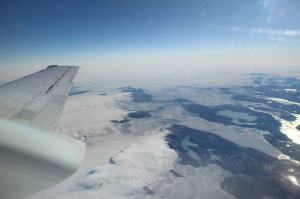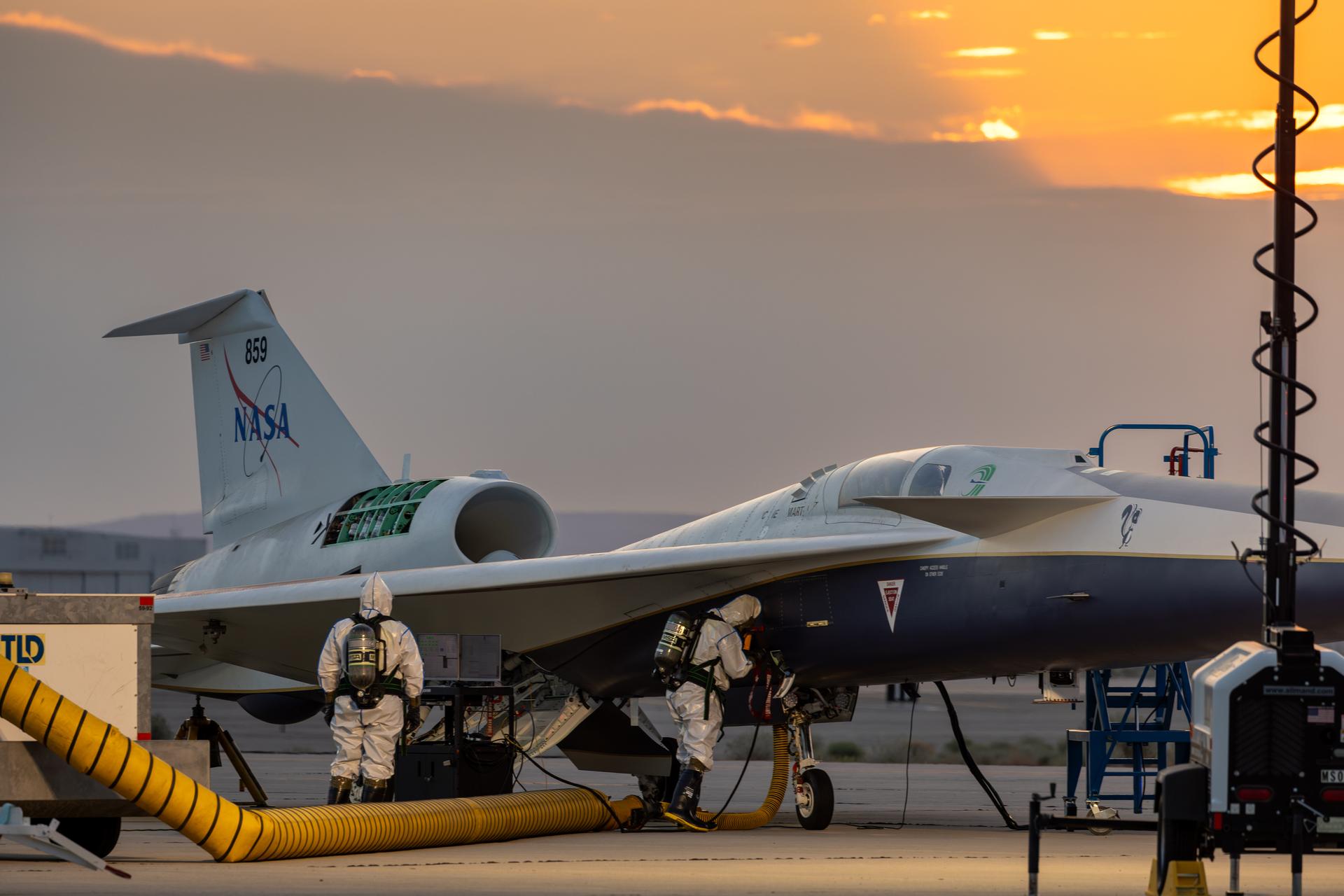NASA’s Armstrong Flight Research Center in Edwards, California, operates the Raytheon Aircraft Co. T-34C training plane for pilot proficiency and mission support. The aircraft accompanies research flights for photography and video data collection, and also as safety chase. At Armstrong, the T-34C is primarily used for chasing remotely piloted unmanned air vehicles that fly slower than NASA F-18 mission support aircraft can fly.
The T-34C’s utility as a support aircraft is its role in validating detect-and-avoid technology in unmanned aircraft systems. In April 2016, NASA Armstrong began flying the T-34C as an “intruder” in the Unmanned Aircraft Systems Integration into the National Airspace System (UAS-NAS) Flight Test Series 4.
Equipped with Automatic Dependent Surveillance-Broadcast (ADS-B) and Traffic alert and Collision Avoidance System (TCAS) I, it was one of six aircraft to fly as an intruder in the test. The T-34C’s job included flying within a pre-determined distance to NASA Armstrong’s Ikhana unmanned aircraft, on a specifically charted course, to test detect and avoid systems that were integrated on Ikhana with the purpose of providing the UAS pilot on the ground with situational awareness and alerting of nearby aircraft and provide the UAS pilot with timely information to maintain a safe distance.
In its role as a military trainer, the instructor pilot would ride in the back seat, while the student would be in the front seat. As a NASA mission support chase plane, the back seat would be occupied by a photographer or flight test engineer on research missions.
NASA Armstrong has operated two T-34C aircraft. The first was previously flown at NASA’s Glenn Research Center in Cleveland, Ohio, for propulsion experiments involving turboprop engines, and then came to Armstrong (then NASA’s Dryden Flight Research Center) as a chase aircraft in 1996. That aircraft was returned to the U.S. Navy in 2002. Dryden obtained its second T-34C in early 2005 from the U.S. Navy’s Air Warfare Center Aircraft Division at Naval Air Station Patuxent River, Maryland, where it was due to be retired.
Nicknamed the Turbo Mentor, the T-34C is an upgraded, turboprop-powered version of the earlier piston-engined T-34A and T-34B models that served as primary training aircraft for Navy and Marine Corps pilots for more than 40 years. Built by Beech Aircraft Co. (now Raytheon Aircraft), the T-34C shares the same basic wing planform and landing gear as the civilian Beechcraft Bonanza series of general aviation aircraft from which it was derived.
Aircraft Specifications
The T-34C is an un-pressurized, two-place, tandem cockpit, low-wing, single-engine, propeller-driven monoplane.
Length: 28 feet, 6 inches (9 meters)
Wingspan: 33 feet, 4 inches (10 meters)
Height: 9 feet, 7 inches (3 meters)
Empty weight: ~3,000 poinds
Max takeoff weight: 4,400 pounds
Primary mission/capabilities:
- Low-cost research testbed for low-medium altitude flight systems and experiments
- Flight test and verification of avionics and sensor systems
- Excellent slow speed safety/photo chase
Max airspeed: 280 knots (never exceed) (320 mph)
Max. cruise: 223 knots (257 mph) at 17,500 feet
Max altitude: 25,000 feet
Max rate of climb: 1,500 feet/minimum
Payload: 1,300 pounds
Range/duration: ~600 nautical miles range/4 hour duration
Max acceleration: +4.5 g, -2.3 g
Engine: PT6A-25 turbo-prop; 550 hp maximum
Fuel capacity: 142 gallons
Crew: Two; pilot and flight test engineer or photographer
Manufacturer: Beech Aircraft Corporation (now Raytheon Aircraft)
Test Instrumentation: Instrumentation suite includes aircraft rates and attitudes; control surface positions; cockpit control positions; boom pitot and static pressures; and engine and propeller parameters.



































